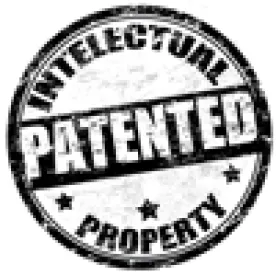Ever since the Supreme Court unanimously ruled in Mayo Collaborative Services v. Prometheus Laboratories Inc.1 that a method for adjusting a drug dosage after observing a patient's reaction to a drug administration was patent-ineligible subject matter under 35 U.S.C. § 101,2 biotechnology and pharmaceutical patents have been subject to further scrutiny. The unanimous Supreme Court ruling in Association for Molecular Pathology v. Myriad Genetics, Inc.3 that isolated human genes were patent-ineligible under 35 U.S.C. § 101 further undercut patents directed to isolated genes.
On March 4, 2014, the U.S. Patent and Trademark Office (USPTO) released a guidance memorandum (the Guidance) to the Patent Examining Corps providing guidelines for analyzing subject matter eligibility under 35 U.S.C. Section 101 of claims reciting or involving laws of nature/natural principles, natural phenomena and/or natural products in view of thePrometheus and Myriad decisions.
The impact of the Guidance is significant. For claims involving natural products (such as active ingredients from natural products or naturally occurring nucleic acids, such as antigens, antibodies, DNA, RNA) to be patent eligible, they must be "significantly" or "markedly" different from the natural products. We anticipated and have observed a significant increase in Section 101 rejections to claims directed to natural products and diagnostic methods—the subject matter of many biotechnology and pharmaceutical patent applications. A number of these rejections have turned on what is necessary for a claimed product to be "significantly" or "markedly" different from a natural product, especially as "significantly" or "markedly" different from a natural product is a USPTO-created test, not based in statutory language. As an example, we observed a significant increase in Section 101 rejections to claims directed to natural products and diagnostic methods—the subject matter of many biotechnology and pharmaceutical patent applications.
On May 8, 2014, the Federal Circuit affirmed a Patent Trial and Appeal Board (PTAB) decision that the claims of U.S. Patent Application No. 09/225,233 (the '233 application) are not patentable-eligible subject matter under 35 U.S.C. § 101. Dolly's genetic identity to her donor parent rendered her patent ineligible. The Federal Circuit clarified that having the same nuclear DNA as the donor mammal may not necessarily result in patent ineligibility in every case.
The backlash to the Guidance reverberated in the biotech community. The USPTO solicited comments from the community and plans to set forth a revised Guidance to clarify the standards for patent-eligible subject matter.
But what to do in the meantime in the face of potentially non-enforceable patents as well as Section 101 rejections?
With respect to potentially non-enforceable patents dealing with isolated genes and/or diagnostic matters, these patents may be cured by reissue. 35 U.S.C. § 251 provides for the reissue of defective patents.4 A patent may be reissued if a patent is deemed wholly or partly inoperative or invalid by reason of the patentee claiming more or less than he had a right to claim in the patent. The Prometheus and Myriad decisions may render a patent invalid and the patentee may have claimed more or less than he had a right to claim. If there is sufficient disclosure in the specification for transformative steps, method claims and/or kit claims, reissue could be a cure for patents rendered invalid by the Prometheus and Myriad decisions.
What about patent applications currently in prosecution? Currently, the USPTO broadly applies the Guidance and it is the Applicant's burden to rebut the USPTO. Arguments of a transformative step or a "significant" or "marked" difference alone may not be persuasive, but should be presented to preserve the issue for appeal. Alternative claims directed to methods of manufacture and/or methods of treatment should also be considered. For biotech patents, claims to isolated nucleic acid sequences may be patent ineligible; however, claims directed to vectors containing isolated nucleic acid sequences, cells expressing isolated nucleic acid sequences and organisms isolated nucleic acid sequences remain patent-eligible subject matter. Furthermore, as evidenced by the Dolly decision, patent applicants need to ensure that distinctions (e.g., phenotypic, mitochondrial distinctions) between donor animals and clones are recited in claims before the USPTO—as well as in claims taken up on appeal to the PTAB or the Federal Circuit.
1 Mayo Collaborative Services v. Prometheus Laboratories Inc., 132 S.Ct. 1289 (2012)
2 35 U.S.C. § 101. Inventions patentable. Whoever invents or discovers any new and useful process, machine, manufacture, or composition of matter, or any new and useful improvement thereof, may obtain a patent therefor, subject to the conditions and requirements of this title.
3 569 U.S. _, 133 S. Ct. 2107, 2116, 106 USPQ2d 1972 (2013)
4 35 U.S.C. 251. Reissue of defective patents. Whenever any patent is, through error without any deceptive intention, deemed wholly or partly inoperative or invalid, by reason of a defective specification or drawing, or by reason of the patentee claiming more or less that he had a right to claim in the patent, the Director shall, on the surrender of such patent and the payment of the fee required by law, reissue the patent for the invention disclosed in the original patent, and in accordance with a new and amended application, for the unexpired part of the term of the original patent. No new matter shall be introduced into the application for reissue.


 />i
/>i
